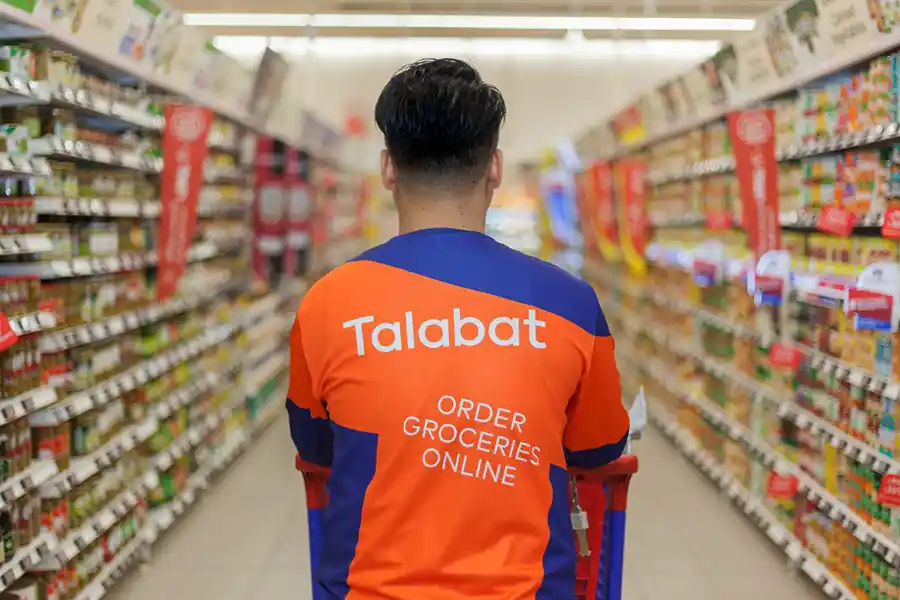Online Food Ordering in Iran: A Growing Segment of the Startup Ecosystem
How Online Food Delivery Platforms Are Shaping Iran’s Startup Ecosystem

The online food ordering market in Iran is rapidly becoming a key part of the country’s booming startup ecosystem. Currently valued at $3.5 billion annually, around 17% of all food orders are made online, with the rest handled through traditional methods. As digital transformation continues to reshape various industries, the online food sector has emerged as one of the fastest-growing fields. Dominated by leading platforms like SnappFood, the sector is also seeing new contenders such as Tapsi Food (previously Ofood), making their mark with significant backing.
Who’s Leading the Online Food Ordering Market?
Iran’s online food delivery market is heavily dominated by SnappFood, which has established itself as the go-to platform for millions of Iranians. However, with new players like Tapsi Food stepping in, the competition is heating up. Although still in its early stages, Tapsi Food has received significant investment from Golrang, a major Iranian conglomerate, positioning it as a serious contender in the future. Meanwhile, Mamanpaz, with its unique focus on homemade meals, appeals to those seeking healthier, more traditional food options, primarily in Tehran.
- SnappFood: As the largest online food delivery service in Iran, SnappFood offers an intuitive app that connects users to a wide variety of restaurants, cafes, and even grocery stores. It boasts a strong presence in most major cities, from Tehran to Mashhad. Frequent discounts, an easy-to-navigate interface, and reliable delivery services make it the market leader.
- Tapsi Food (formerly Ofood): Although new to the game, Tapsi Food has already drawn attention due to its backing from Golrang. While it’s still working to capture significant market share, the platform leverages Tapsi’s ride-hailing infrastructure to streamline delivery services. With plans for expansion, Tapsi Food is one to keep an eye on as the market continues to evolve.
- Mamanpaz: Unlike mainstream food delivery platforms, Mamanpaz focuses on delivering homemade meals prepared by local chefs. Catering primarily to health-conscious consumers and those who miss the taste of home, it has carved out a niche in Tehran. It’s the go-to option for those wanting traditional Iranian food, freshly cooked in home kitchens.

Factors Fueling Growth
Several factors are contributing to the rapid expansion of online food delivery in Iran:
- Urbanization and Changing Lifestyles: As more people flock to cities like Tehran, Shiraz, and Isfahan, demand for quick, convenient food options grows. Young professionals, students, and families are turning to food delivery platforms as a time-saving solution.
- Smartphone Usage: With more than 65 million Iranians using smartphones, mobile apps for ordering food have become an integral part of everyday life. The convenience of accessing a wide range of restaurant options, coupled with promotions and special deals, is driving more people to order online.
- COVID-19 Impact: The pandemic accelerated the adoption of online food delivery services as people sought safer, contactless ways to get their meals. Even as restrictions have eased, the habit of ordering food online has stuck, leading to sustained growth.
- Promotions and Discounts: Platforms like SnappFood attract customers through frequent deals, discounts, and free delivery offers. These incentives, along with easy payment methods, keep users engaged and loyal to the platform.
The Challenges Ahead
Despite its growth, the online food delivery market in Iran faces a few key challenges:
- Economic Uncertainty: With inflation and currency devaluation affecting purchasing power, many Iranians are finding it difficult to afford non-essential services like food delivery. Platforms may need to adapt by offering more affordable options or special promotions to retain their customer base.
- Fierce Competition: While SnappFood currently leads the market, competition is increasing, especially with the rise of Tapsi Food. Smaller players like Mamanpaz are also vying for attention by offering specialized services, making the landscape more competitive.
- Operational Efficiency: Delivering food in congested cities like Tehran can be challenging, especially during peak hours. Ensuring timely deliveries while maintaining food quality is crucial for customer satisfaction.
Opportunities for Future Growth
- Expanding to Smaller Cities: While most online food delivery platforms focus on major cities, smaller towns and rural areas represent untapped markets. Expanding services to these regions could provide significant growth opportunities.
- Diversification of Services: Beyond food delivery, platforms are beginning to offer grocery and pharmaceutical deliveries. This diversification helps platforms retain users even when they aren’t ordering meals, expanding their footprint in everyday consumer life.
- Technology Integration: As the market matures, integrating technologies like AI-powered restaurant recommendations, drone deliveries, and real-time tracking can enhance user experience and streamline operations.
- Collaborations with Local Businesses: Forming partnerships with local restaurants, cafes, and even grocery stores allows platforms to expand their offerings while supporting local economies. These partnerships can also help boost visibility and customer trust.
Comparing Iran’s Online Food Market with Turkey and Egypt: A Regional Perspective
When examining the online food ordering market across the Middle East, Iran, Turkey, and Egypt stand out as key players with rapidly evolving sectors.
- Iran: With a total food ordering market valued at $3.5 billion annually, about 17% of which is conducted online, Iran’s online food ordering sector is worth approximately $595 million. The market is driven by platforms like SnappFood and new entrants such as Tapsi Food.
- Turkey: Turkey’s online food delivery market is slightly larger, with an estimated annual value of $5 billion, of which around 25% is conducted online. This means the online segment in Turkey is worth about $1.25 billion, driven by dominant platforms like Yemeksepeti and Getir. Turkey’s higher percentage of online orders can be attributed to faster urbanization, better internet infrastructure, and higher consumer trust in digital services.
- Egypt: Egypt, with a smaller total food market of approximately $2.8 billion, sees about 12% of its food orders conducted online, leading to an online food market value of roughly $336 million. Platforms like Otlob (now Talabat) and Uber Eats (before its exit) have been key players, though the market is still developing compared to Iran and Turkey.

Market Insights
- Growth Potential: While Turkey leads in both the total market size and the share of online orders, Iran’s rapidly growing startup ecosystem and the increasing reliance on food delivery services indicate that its online food market has significant potential for growth. On the other hand, Egypt, though smaller, is catching up as internet connectivity improves and more consumers become familiar with digital platforms.
- Regional Trends: In all three countries, urbanization, smartphone penetration, and changes in consumer behavior are driving the expansion of the online food delivery market. However, factors like economic volatility and differences in technological adoption rates influence how each market evolves.
The Future of Online Food Ordering in Iran
The future of online food ordering in Iran is bright, with the market continuing to grow thanks to increasing smartphone usage, urbanization, and changing consumer habits. Leading platforms like SnappFood are well-positioned to maintain their dominance, but new entrants such as Tapsi Food and niche players like Mamanpaz are expected to challenge the status quo. As more players enter the market and technology continues to evolve, online food delivery will remain a key segment of Iran’s dynamic startup ecosystem.





